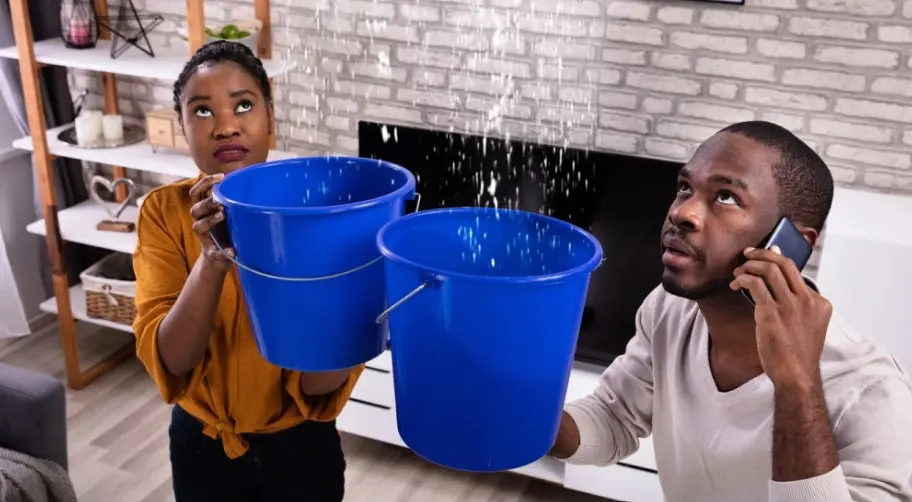Water-related disasters can strike unexpectedly, wreaking havoc on your property and causing emotional and financial stress. Whether it’s a burst pipe, a natural flood, or a leaky roof, knowing how to act quickly and effectively is key to minimizing damage. For expert guidance, visit www.theinspectorscompany.com/ and take the first step toward protecting your home.
This comprehensive guide walks you through water removal and flood damage recovery, equipping you with expert knowledge to protect your property and peace of mind.
The Hidden Threats of Water Damage
Water damage goes beyond what meets the eye. Beneath puddles and damp walls lurk potential issues like mold, compromised structures, and electrical hazards. Acting swiftly not only saves your property but also ensures your safety.
Step 1: Assess the Situation – Stay Safe Before All Else
Before diving into water removal, evaluate the situation for safety risks. Floodwater can carry contaminants, and electrical systems may pose hazards. Ensure the area is safe for entry before starting recovery efforts.
Important First Steps
- Turn Off Power: Cut electricity to avoid shocks.
- Wear Protective Gear: Use gloves, boots, and masks to protect yourself.
- Document the Damage: Take photos and videos for insurance purposes.
Step 2: Removing Water – Time Is of the Essence
Once the area is safe, begin removing standing water as quickly as possible. The longer water lingers, the more damage it causes to floors, walls, and furniture.
Effective Water Removal Tools
- Wet/Dry Vacuums: Great for small to moderate water accumulation.
- Submersible Pumps: Handle large volumes of water efficiently.
- Buckets and Towels: A handy DIY solution for smaller areas.
Fun Fact: Did you know that one inch of floodwater can cause up to $25,000 in damage to a home or business? Acting fast can save you thousands.
Step 3: Drying and Dehumidifying – Leave No Moisture Behind
Even after removing visible water, moisture can linger in walls, floors, and ceilings. Professional-grade dehumidifiers and air movers are essential to thoroughly dry the area and prevent mold growth.
Signs of Hidden Moisture
- Musty odors
- Discolored walls or ceilings
- Warped wood or peeling paint
Step 4: Cleaning and Sanitizing – A Fresh Start
Floodwater often contains bacteria, chemicals, and debris, making thorough cleaning and sanitization critical. This step ensures your property is safe and hygienic before restoration begins.
Key Cleaning Methods
- Antimicrobial Treatments: Prevent mold and bacteria from spreading.
- Steam Cleaning: Revive carpets and upholstery.
- Specialized Care: Electronics and sensitive documents may require professional restoration.
Step 5: Restoring and Rebuilding – From Damage to Durable
Once the area is dry and clean, it’s time to restore your property. Depending on the extent of the damage, this could range from minor repairs to full-scale renovations.
Common Restoration Tasks
- Replacing drywall
- Refinishing floors
- Repainting walls
Pro Tip: Use water-resistant materials, such as ceramic tiles or vinyl flooring, in flood-prone areas to reduce future risks.
Preventing Future Water Damage
Flood recovery isn’t just about repairing the present; it’s also an opportunity to prepare for the future. Implementing preventative measures can save time, money, and stress down the line.
Simple Steps for Prevention
- Maintain Gutters: Regularly clean gutters to prevent blockages.
- Seal Cracks: Fix cracks in foundations or walls to stop leaks.
- Install a Sump Pump: A reliable defense against basement flooding.
- Invest in Flood Sensors: Early detection tools that alert you to leaks.
Fun Fact: Flood sensors are getting smarter! Some models now integrate with smart home systems, sending alerts directly to your phone.
The Role of Insurance in Flood Recovery
Navigating insurance claims after a flood can be daunting. Understanding your policy and documenting damage thoroughly are crucial steps to ensure smooth processing and maximum reimbursement.
Insurance Tips
- Act Quickly: Notify your insurer as soon as possible.
- Provide Evidence: Share photos, videos, and receipts for damaged items.
- Ask Questions: Clarify coverage for water damage versus flood damage – policies often differ.
Why Professional Help Matters
While DIY methods can handle minor water issues, severe damage calls for professional expertise. Certified water damage restoration specialists, such as those at Risk Free Serv, San Diego, CA, have the tools and experience to address hidden problems, speed up recovery, and ensure your property is fully restored.
Benefits of Hiring Experts
- Advanced equipment for thorough drying and dehumidification
- Expertise in mold prevention and structural repairs
- Assistance with insurance claims and documentation
Did You Know? Water damage is the second-most common insurance claim in the U.S., accounting for billions in damages annually. Yet, many people underestimate the importance of regular maintenance and preparedness.
Floods and water damage can be overwhelming, but recovery is entirely possible with the right steps and support. By acting quickly, cleaning thoroughly, and restoring strategically, you can safeguard your property and turn a potentially devastating situation into a resilient comeback.
Remember, every drop counts – whether it’s removing water, restoring your space, or preventing future disasters, a proactive approach ensures your property stays safe and secure for years to come.
Also Read –Essential Plumbing Tools Every Homeowner Needs in Their Toolkit



